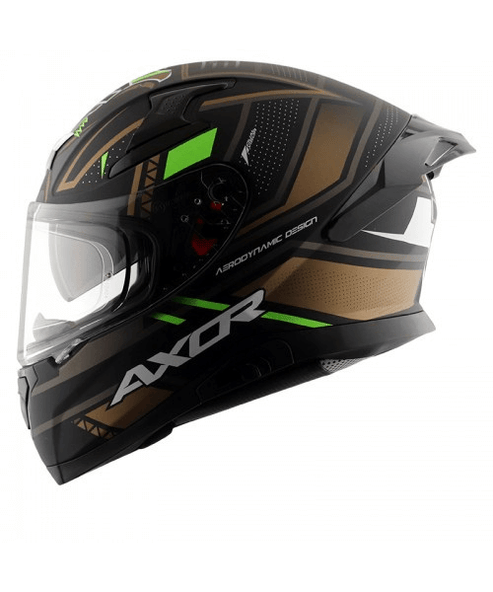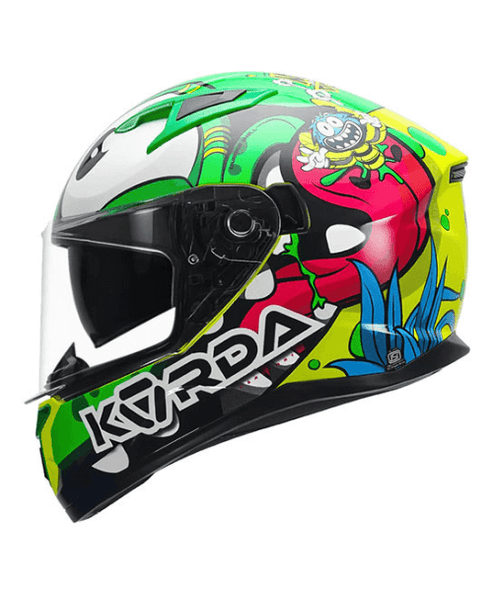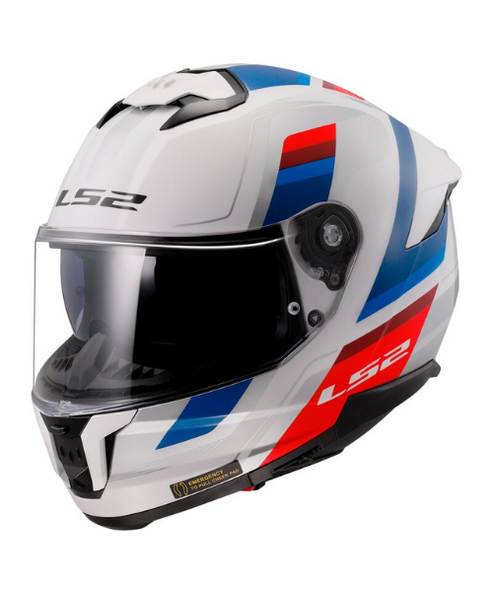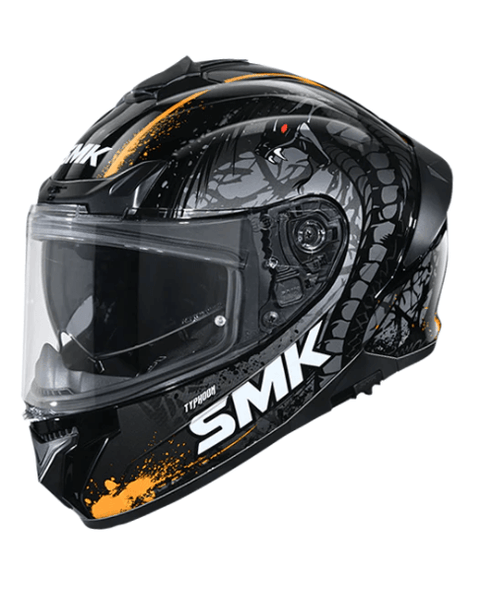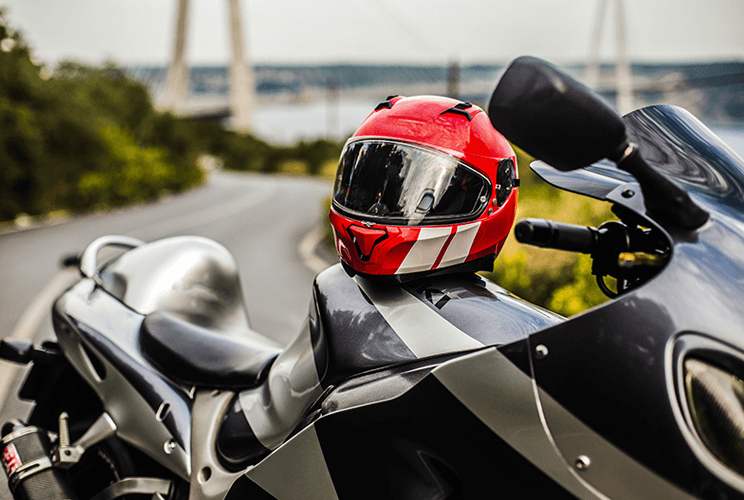
A Guide To Choosing Safest Helmets For Motorcycle In India
When it comes to bike accidents, using the best safety helmet for bike riding is crucial to prevent head injuries. Helmets are arguably the most crucial safety gear for riders, but with multiple options available in the market, choosing the right one can be a challenge. Helmets don’t come cheap, and their purpose should never be taken lightly. It’s vital to ensure that the helmet you invest in offers the best protection when it’s securely on your head during your rides.
In this guide, we have highlighted important factors to help you select the right helmet that ensures both safety and comfort.
A] Understanding Helmet Safety Standards
Understanding which helmet is best for safety in India involves considering helmet safety standards. The Bureau of Indian Standards (BIS) regulates and certifies helmets in India, while many helmets also adhere to international safety standards like DOT and ECE, ensuring proper impact protection and quality.
1. ISI (Indian Standards Institute)
The Bureau of Indian Standards (BIS) is the government-approved testing and certification organisation in India. Established in 1993, it ensures that helmets of different types meeting ISI ratings comply with legal and safety standards in the country.
Spot checks are conducted to verify manufacturers, ensuring their eligibility for the renewable ISI mark licence. The safety testing methods under ISI align with ECE standards, providing assurance of quality and protection. Factors such as safety, features, fit, finish needs to be considered before buying the helmet.
2. DOT (Department of Transportation)
When it comes to selecting a safe helmet for bike riding, it’s essential to consider DOT-certified helmets. The Department of Transportation (DOT) in the United States establishes safety standards for helmet manufacturers. These include providing peripheral vision not less than 105° from the midline and limiting projections from the helmet’s surface to 5 mm. While DOT sets the standards, it does not directly conduct the testing.
To become DOT-certified, helmets must undergo additional assessments, such as crash tests to evaluate impact intensity, penetration tests for durability, height tests to measure response to drops, and retention system tests to assess strap performance under stress. These criteria ensure helmets adhere to DOT safety standards.
3. ECE (Economic Commission of Europe)
When it comes to motorcycle helmet safety, ECE-approved helmets are widely recognized for their compliance to the latest standards. Developed in Europe, these helmets are applicable in over 50 European cities. The current ECE standard is 22.05.
These helmets successfully pass several checks, including the impact test, which evaluates their ability to absorb and distribute impact forces. Their durability and resistance to wear and tear are assessed through the abrasion resistance test. To ensure secure positioning, the strap test applies approximately 304 kg of force to check for tension failure. Additionally, a deformation test is conducted using a weight of around 68 kg to evaluate the helmets’ resistance to deformation.
4. SNELL (Snell Memorial Foundation)
Since its establishment in 1957, the SNELL Memorial Foundation has remained steadfast in its mission to promote and enhance helmet safety. Helmets that meet Snell standards are regarded as some of the safest available, as they undergo comprehensive testing in various aspects. This includes impact testing, where controlled impacts simulate different surfaces to measure gravitational force and acceleration.
The positional stability test assesses the helmet’s ability to remain securely in place without rolling off the head form. The dynamic retention test evaluates the helmet’s retention system under mechanical loads and deflection limits. The chin bar test measures the downward deflection of the chin upon impact. Snell’s rigorous testing ensures helmets meet high safety standards across bicycling, karting, and professional motorsports.
5. SHARP (Safety Helmet Assessment and Rating Program)
SHARP, developed by the UK government, is a helmet safety rating system. Helmets that meet SHARP standards display a “SHARP” label on the back, indicating their compliance.SHARP testing methods closely align with the ECE 22.05 standard, incorporating higher and lower strike velocities.
SHARP helmets receive ratings ranging from one to five stars in which a 5-star rating signifies the highest level of safety and offers exceptional protection.
If you are looking to buy helmets online, we offer premium helmets that adhere to at least one or more of these safety standards.
B] What Are The Key Components Of Safest Motorcycle Helmets?
When it comes to motorcycle safety, the design and construction of helmets play a critical role in protecting riders. The safest motorcycle helmets consist of several key components that work together to provide optimal protection.
1. Rigid Outer Shell
The rigid outer shell is one of the key components of the motorcycle helmets. It is made from strong and durable materials such as fibreglass, carbon fibre, polycarbonate, moulded plastics, or a combination of those materials. The rigid outer shell safeguards the rider’s head from potential injuries during mishaps.
2. Impact-Absorbing Liner
Positioned beneath the outer shell, this liner is designed to absorb shock and displace energy during an impact. Typically made of expanded polystyrene (EPS) foam, it compresses upon impact. The impact-absorbing liner acts as a cushion, providing additional protection against potential injuries. Its ability to effectively absorb, disperse, and engender impact forces plays a vital role in safeguarding the rider’s head.
3. Comfort Layer
The comfort layer is a vital component of the helmet. Made from soft and breathable materials, it is designed to absorb sweat while enhancing overall comfort during extended rides. The presence of a well-designed comfort layer ensures that the helmet remains comfortable to wear, promoting prolonged usage and ultimately contributing to rider safety.
4. Strong Retention System
A strong retention system is an essential component of the helmets. It is in the form of a chin strap, ensuring a secure and proper fit of the helmet on the rider’s head. Made from high quality materials like nylon or reinforced fabric, it prevents the helmet from coming off during mishap, significantly reducing the risk of head injuries. Its reliable and adjustable design allows for a comfortable fit.
5. Good Ventilation System
A good ventilation system is a crucial component of the helmets. It allows for the circulation of air inside the helmet, preventing heat buildup and reducing sweat. The ventilation system helps to keep the rider cool, comfortable, and focused during rides, particularly in summer.
6. Sturdy Face Shield
A sturdy face shield is an important component of the helmet. It provides protection from wind, dust to the rider’s face and eyes. Made from durable materials like polycarbonate, the face shield is designed to withstand high-speed riding. It is available in various colours and tints to provide riders the best experience.
C] Top Safest Helmet Brands and Models in India:
1. Axor
Started in 2015, Axor helmet emerged as one of the best safety helmet brands in India. Created by international designers and industry experts, Axor aims to offer stylish motorcycle helmets with premium quality, all at an affordable price.
With a diverse range of helmet options, including full-face and half-face designs available in various sizes, Axor prioritises both comfort and protection during your rides.
Recommended Products:
- Axor Street Dc Batman – Dull Anthracite Black
- Axor Retro Jet Girls Ibiza Helmet
- AXOR Retro Dominator Helmet – Dull Black
2. Korda
Korda delivers stylish helmets with global safety certifications such as ECE and ISI. Featuring multiple colours, designs, dual visors, and EU ratchet fasteners, Korda helmets prioritise both style and safety.
The helmet’s injected polycarbonate shell ensures excellent protection for everyday office riders as well as professional riders.
Recommended Products:
- Korda Tourance Suzuka Helmet
- Korda Discovery Wave Modular Helmet – Matt Red
- Korda Tourance Lead Helmet
3. LS2
Introduced in 1990 LS2 is known as one of the top safest bike helmet brands in India. It is popular for its commitment to provide rider safety and quality helmets. LS2 offers a wide range of helmet models that adhere to stringent safety standards, including the Bureau of Indian Standards (BIS) certification.
Recommended Products:
- LS2 FF800 Storm Sprinter Helmet – Matt Black Silver Cobalt
- LS2 MX436 Pioneer Evo Dual Sport Helmet
- LS2 MX436 Pioneer Evo Dual Sport Helmet
4. SMK
SMK is recognized as one of the top safest helmet brands in India, known for its focus on rider protection and innovative designs. SMK offers an extensive range of helmet models with advanced technology that prioritise safety and appealing designs.
SMK’s commitment to safety and quality has made it a trusted choice among riders seeking reliable and secure helmet options in India.
Recommended Products:
- SMK Allterra Fulmine Motorcycle Off Road Helmet Matt Black MA 260
- SMK Hybrid Evo MA200 Matt Black Helmet
- SMK Titan Carbon GLCA200 Carbon Helmet
Conclusion
When selecting a helmet, safety should be your top priority. Opt for a safe helmet that meets rigorous standards and offers optimal protection. Don’t compromise on quality or style. A safe helmet is designed and tested to provide optimal protection in the event of an accident. It is constructed with quality materials, incorporates impact-absorbing features, and meets stringent safety standards and certifications.
Your safety matters, so choose the best helmet from a trusted source. Explore the Bikester Global Shop now and make safety your top priority while enjoying your motorcycle adventures.

